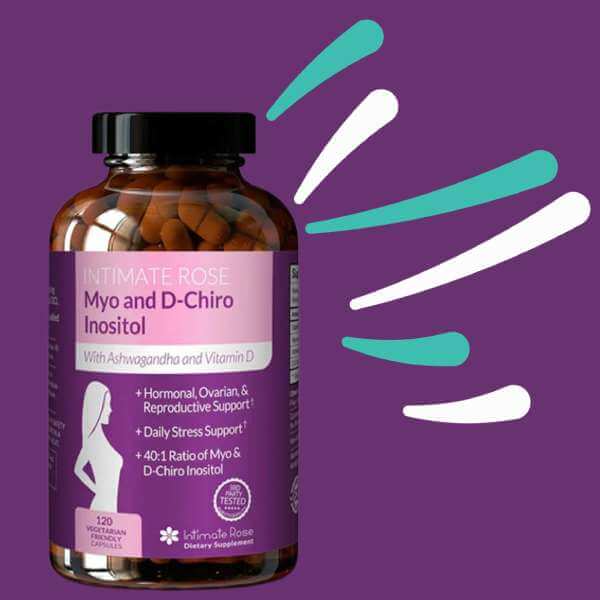Tips for Managing PCOS-Related Pelvic Pain
By Amanda Olson DPT, PRPC
Polycystic Ovary Syndrome (PCOS) is a prevalent hormonal disorder affecting up to 1 in 10 women. While PCOS primarily impacts the reproductive system, its ripple effects extend to the pelvic floor. The tension and stress resulting from PCOS symptoms can lead to chronic pelvic pain syndrome and pelvic floor muscle issues. If left unattended, these conditions can cascade into complications involving muscles, joints, digestion, urinary, and reproductive health.
In this post, we’ll delve into the intricate connection between PCOS and pelvic floor health. Furthermore, we’ll explore various treatment options and lifestyle modifications that can effectively manage PCOS-related pelvic pain, with a spotlight on the advantages of pelvic floor physical therapy.
Understanding your Pelvic Floor Muscles
The pelvic floor muscles, nestled at the base of your pelvis, are a vital group responsible for supporting pelvic organs and regulating urination, bowel movements, and sexual activity. Like any other muscle group, they can encounter a range of issues, including:
- Tension and spasms, resulting in discomfort during activities like bowel movements, sitting, or vaginal penetration
- Discomfort during intercourse, including pain during penetration or orgasm
- Post-sex pelvic floor pain caused by overactive muscles
- Weakening of the pelvic floor due to factors such as aging, injury, surgery, childbirth, and more, leading to unwanted leaks or vaginal prolapse
- Vaginal dryness or atrophy due to age, hormonal fluctuations, cancer treatment, and more, resulting in itching and painful intercourse
PCOS and its Impact on the Pelvic Floor
PCOS often accompanies specific conditions that exert distinct effects on the pelvic floor, including:
- Hormonal Imbalance: PCOS can cause a drop in estrogen levels, leading to vaginal dryness
- Endometriosis: PCOS may coincide with endometriosis, a condition where cells similar to the uterine lining tissue grows outside the uterus, provoking pelvic discomfort
- Ovarian Cysts: Women with PCOS might develop ovarian cysts that create pressure and tension within the pelvic and abdominal region, intensifying pelvic pain during menstruation and intercourse
- Uterine Fibroids: PCOS may also be accompanied by uterine fibroids, benign growths that elevate pelvic pressure and tension, resulting in discomfort
Pelvic Floor Physical Therapy and PCOS
If you’ve been diagnosed with PCOS, seeking the expertise of a pelvic floor physical therapist is a wise decision. Pelvic floor physical therapy proves highly beneficial for individuals with PCOS, addressing abdominal and pelvic pain issues like painful periods or intercourse. It offers valuable insights into simple lifestyle adjustments and recommendations for resources to alleviate pain.
A pelvic floor physical therapist can guide you in properly relaxing, coordinating, and elongating tight pelvic floor muscles. They teach techniques to achieve this, provide manual treatments, aid in neuromuscular re-education, and prescribe exercises to enhance muscle function and reduce pain.
Exploring Solutions for PCOS-related Pelvic Pain
In addition to pelvic floor physical therapy, various solutions can ease PCOS-related pelvic discomfort:
Myo & D-Chiro Inositol

These supplements help balance hormones responsible for symptoms like vaginal dryness, excess facial hair, acne, insulin resistance, infertility, anxiety, and stress, often accompanying PCOS. Myo and D-Chiro Inositol blends can regulate hormone production and provide additional support for mood and stress.
Breathing Techniques and Stretches for Pelvic Health
Promoting pelvic floor health involves diaphragmatic breathing and specific stretches. Diaphragmatic breathing utilizes the body’s natural mechanics to gently stretch the pelvic floor muscles. When you breathe in, your diaphragm moves into your abdominal cavity, applying gentle pressure on the pelvic floor and resulting in slight elongation or drop of the pelvic floor muscles.
To ensure proper technique, place one hand on your chest and another on your belly while lying down, focusing on breathing into your belly. This helps avoid shallow chest breathing, which can hinder pelvic floor relaxation.
Incorporating pelvic floor stretches into your routine, such as Happy Baby, Deep Squat, Cat/Cow Stretch, Figure Four Stretch, Child’s Pose, Adductor Stretch, and Hamstring Stretch, can further support pelvic health. Perform these stretches 5-7 days a week, combining them with diaphragmatic breathing for optimal results. These stretches target various muscle groups, promote flexibility, and aid in relieving tension in the pelvic region, contributing to overall pelvic health.
Lubricants for Vaginal Health
Vaginal dryness, common with PCOS and hormonal changes, can be managed with organic, natural, clinician-developed vulvar balms or vaginal moisturizers. These products soothe itching, maintain moisture, and promote healthy tissue. When selecting lubricants, opt for safe, water-based, toxin-free options that mimic the vagina’s natural pH.
Variation in Sexual Positions
If sexual intercourse is painful, experimenting with different positions can make a significant difference. Adjust angles and explore positions that promote pelvic floor relaxation and comfort. Find what works best for you and your partner, and don’t hesitate to consult a sex therapist for additional guidance.
Pelvic Wands and Vaginal Dilators

Despite their intimidating appearance, pelvic wands and vaginal dilators are powerful tools for managing pelvic pain:
Vaginal Dilators: Ideal for treating restrictions at the vaginal opening, helping with penetration discomfort during pelvic exams, tampon use, or sexual intercourse. Particularly effective for conditions like vaginismus, scar tissue, or hypertonic muscles.
Pelvic Wands: Used for perineal massage, introitus stretching, and reaching deeper pelvic floor muscles. Beneficial for individuals with Endometriosis, Interstitial Cystitis pain, tailbone pain (Coccydynia), hypertonic muscles, or deep dyspareunia.
PCOS can indeed affect the pelvic floor, causing discomfort and pain. However, with the guidance of pelvic floor physical therapy and the strategies shared in this guide, relief and improved pelvic health are within reach.
Seek professional support to manage and alleviate PCOS-related pelvic pain. Remember, you’re not alone, and there’s hope and help for a more comfortable and healthier you.

